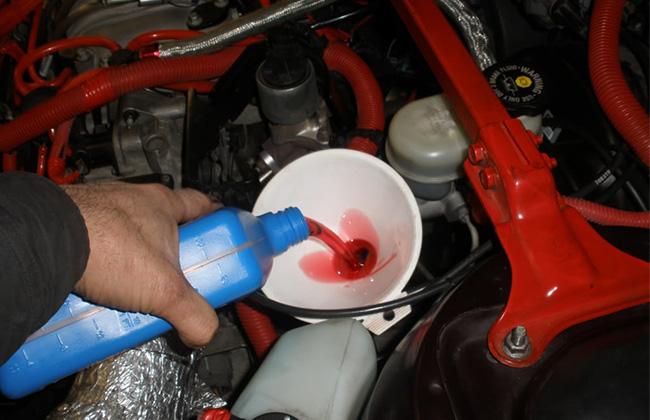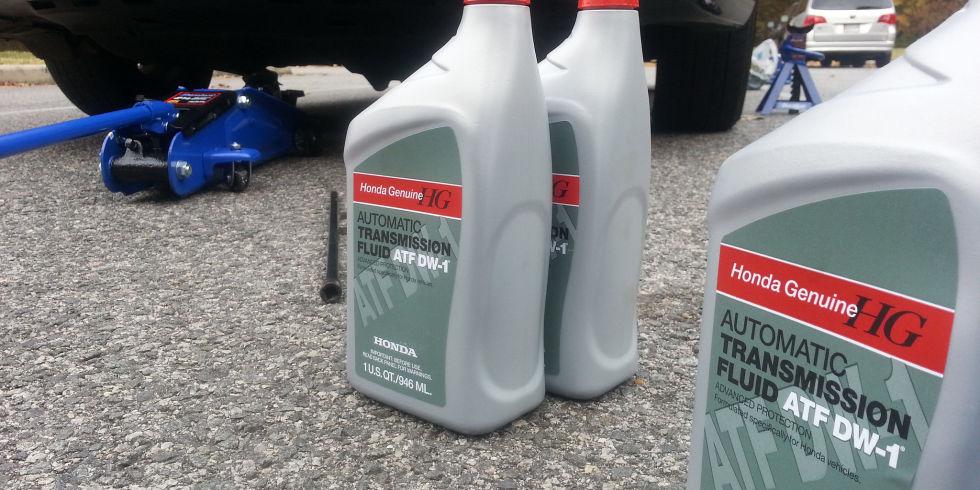The automatic transmission fluid performs two vital roles – lubricating and cleaning. The liquid circulates through various parts to reduce friction between them and gather sediments that can circulate through the system and cause damage.
You need to change oil for automatic gearbox at regular intervals to keep the car running and healthy.
Contents
Things You Should Know While Changing the Automatic Transmission Fluid (ATF)
If you want to carry out the procedure of automatic transmission fluid flush into your garage, it’s necessary to have knowledge about some things.
The color is red
The color of fresh transmission fluid is bright red and smells sweet or like a tart. You need to change it if the texture turns into a smoky dark shade and it reeks a burned odor. Use a dipstick to see if the fluid is fresh or becomes blackened.
Besides, the dipstick is also handy to measure the level of the liquid. You will need to fill up if the level is low.

Flushing is necessary for burnt oil
The fuel changes its color because of the heat and for collecting dirt and metal shavings over time.
If you don’t flush the chamber at the time of filling it up with new fluid, there’s a chance that the sediments of the old burnt oil will flow through the system.
It’s risky because the dirt can damage various components. So, you need to flush out the old fuel at the time of changing.
SEE MORE:
Clean the torque converter too
Everyone knows about cleaning the transmission pan and replacing the filter but amateur people forget about the torque converter. In fact, half of the burnt up automatic transmission fluid and the contaminants remain in that component.
You should also clean up the valve body and clutch drums if you want to get the full benefit of change oil for transmission gearbox.
Seal the pan properly
If you find dimples around the bolts of the pan rail, flatten them with a hammer and dolly. Not doing it will leave you with the risk of a leaking pan gasket sometimes later.
You can also use adhesive or a thin layer of gasket sealer for extra protection. Don’t use a silicone sealant because it will break off eventually and increase your problems by clogging the pump intake.

Change Oil for Automatic Gearbox Regularly
Regular change of automatic transmission fluid prolongs the life of your car. You should schedule a change at every 30,000 miles or 30 months.
However, the best thing to do is to check the owner’s manual to get the correct recommendations. In fact, it mostly depends on how you use the vehicle.
If it tows heavy loads in warm weather, you may have to change the liquid every year.
FAQs on Changing Automatic Transmission Fluid
-
What type of Automatic Transmission Fluid should I use for my vehicle?
Always use the ATF type recommended in your vehicle’s manual. Using the wrong type can damage your transmission. There are different types, such as Dexron, Mercon, and CVT fluid.
-
How do I check my transmission fluid level?
Consult your vehicle’s manual for specific instructions. Typically, you’ll need to check the fluid level with the engine running and the transmission at operating temperature, following a specific procedure.
-
Can changing ATF improve fuel efficiency?
Yes, changing ATF when needed can help improve fuel efficiency by ensuring the transmission operates optimally. A poorly performing transmission can lead to increased fuel consumption.
-
Should I do a complete ATF flush or just a fluid change?
A fluid change involves draining and refilling part of the ATF, while a flush replaces most of the fluid. The choice depends on your vehicle and its condition. Flushing can remove more contaminants but may not be necessary for all vehicles.
-
Is it necessary to change the transmission filter with the fluid?
Changing the filter is a good practice when changing ATF, as it helps remove debris and contaminants. However, not all vehicles have a serviceable filter. Check your vehicle’s manual for guidance.
-
Is it necessary to change the transmission fluid if it’s synthetic?
Even synthetic ATF can degrade over time due to heat and contamination. While synthetic fluids often have longer service intervals, they still require periodic changes to ensure optimal transmission performance.
Check out this video from ChrisFix to get more information on how to change automatic transmission fluid and filter!
-
How can I dispose of old Automatic Transmission Fluid properly?
Dispose of old ATF at a recycling center or hazardous waste disposal facility. Never dump it into the environment, as it can be harmful to soil and water.
-
What should I do if I accidentally use the wrong type of ATF?
If you mistakenly use the wrong type of ATF, consider having it professionally flushed and replaced with the correct fluid to prevent potential damage to your transmission.
-
Can changing ATF fix transmission problems like slipping or rough shifting?
Changing ATF can improve the performance of a transmission, but it may not resolve all issues. If you’re experiencing significant transmission problems, it’s best to have a professional diagnosis and repair.
-
Can I tow a trailer immediately after changing ATF?
After changing ATF, it’s advisable to drive your vehicle for a short period to ensure proper fluid distribution and to check for any leaks or issues before towing heavy loads.
-
Can I use generic ATF, or should I use the manufacturer’s brand?
It’s usually best to use the ATF brand recommended by the vehicle manufacturer to ensure compatibility and proper performance.
However, some generic ATF brands may meet the required specifications; check for approvals and compatibility before using them.
Conclusion
Changing automatic transmission fluid is a crucial aspect of vehicle maintenance that can significantly impact the longevity and performance of your vehicle’s transmission.
It’s essential to follow manufacturer recommendations for ATF change intervals and use the appropriate type of ATF for your specific vehicle.
Understanding the signs of dirty or deteriorated fluid, such as unusual shifting patterns or fluid discoloration, can help you identify when it’s time for a change. Regular changes can prevent costly transmission repairs and keep your vehicle running smoothly.




Very helpful!!keep posting such articles
We are glad that you like the article. Don’t forget to share with your friends!
Useful info. Continue giving us such.
I drive a 2007 Toyota Harrier 240G and lately I have noticed that sometimes it refuses to move when drive is engaged even though it reverses ok. What could be happening?
I own a Toyota Ractis 1300cc which has given me a hell of time. When I bought it it had a knocking sound inside the engine. I changed the engine but the situation worsened. Fuel consumption went up. What could be the problem and is there a remedy?
I use a vitz 2006 model but i cant see where to check for ATF .
I was told they are some cars that do not need extra ATF is this true?
I use a vitz 2006 model but i cant see where to check for ATF .
I was told they are some cars that do not need extra ATF is this true?
for used Japanese car.. Lets say 2004 car but with mileage less tha 30000..if imported today when is the best time to change transmission oil?